Finally, we have with us the new microarchitecture of Intel. It’s called Tiger Lake, and it will be the absolute flagship in the also renewed 11th generation Intel Core processors for laptops.
Although Intel already outlined some of its features last January at the CES in Las Vegas, it is now that we finally know the first members of a family that is improving in many areas, but above all marks the debut of the new Intel Iris Xe graphics chips.
Intel stands up to the Ryzen 4000
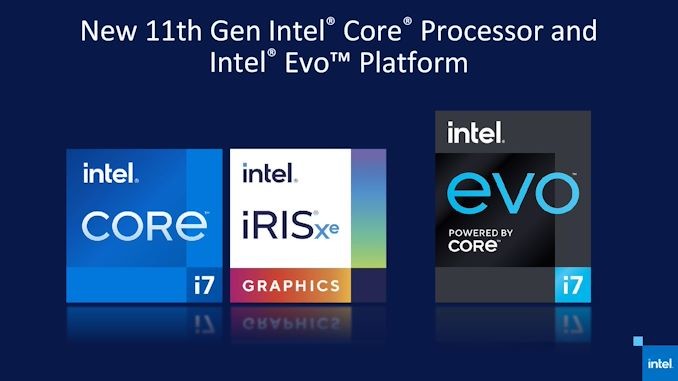
In the last few months, we have witnessed an upsurge in the eternal battle between Intel and AMD, and this new Tiger Lake family is Intel’s response to what AMD has achieved with the Ryzen 4000.
It’s too early to determine if Intel has managed to outperform its competitor and regain the throne of performance on both CPUs and GPUs. The numbers they have given promise, but it will be in an independent analysis where those conclusions can be determined.
What is clear is that Intel’s catalog is a priori remarkable and integrates very relevant news. The new Willow Cove cores with up to 4 cores and 8 execution threads and a Turbo frequency of 4.8 GHz are the highlights, but so are those new Iris Xe graphics with up to 96 execution units and a performance that is double that of the previous family, Ice Lake, in its integrated GPUs.
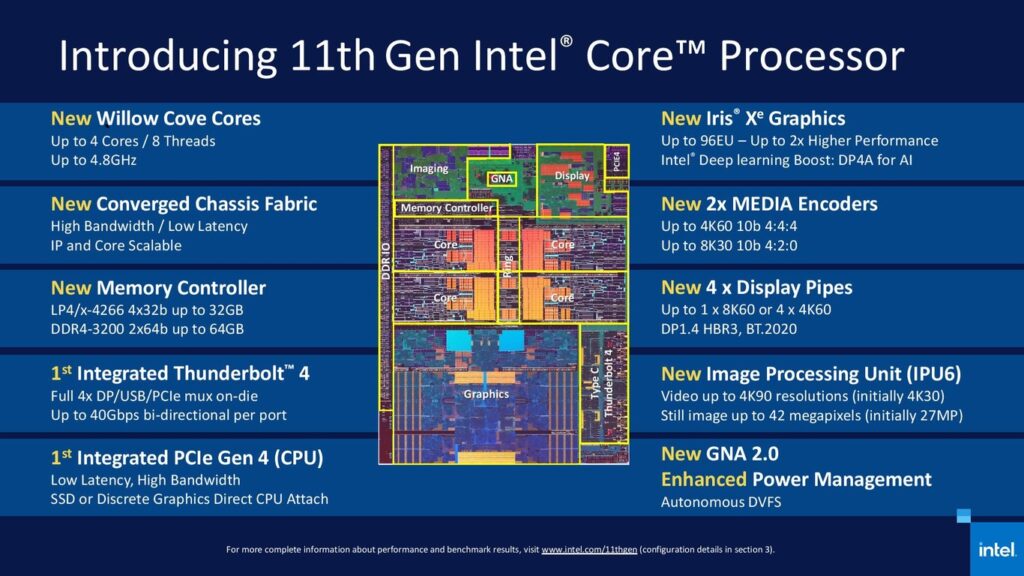
There are more advantages that Intel already introduced in its Architecture Day 2020 in August: the integration of Thunderbolt 4, the support of PCIe 4.0, the capacity to connect up to 4K monitors at 60 Hz or its new multimedia content encoders (which will allow 4K60 video with 10 bits of color and 4:4:4 subsampling, that is, without compression).
This launch will have nine processors at the beginning. Six of them are of the so-called “UP3 class”, which replaces the previous “U” class and which has TDPs ranging from 12 to 28 W.
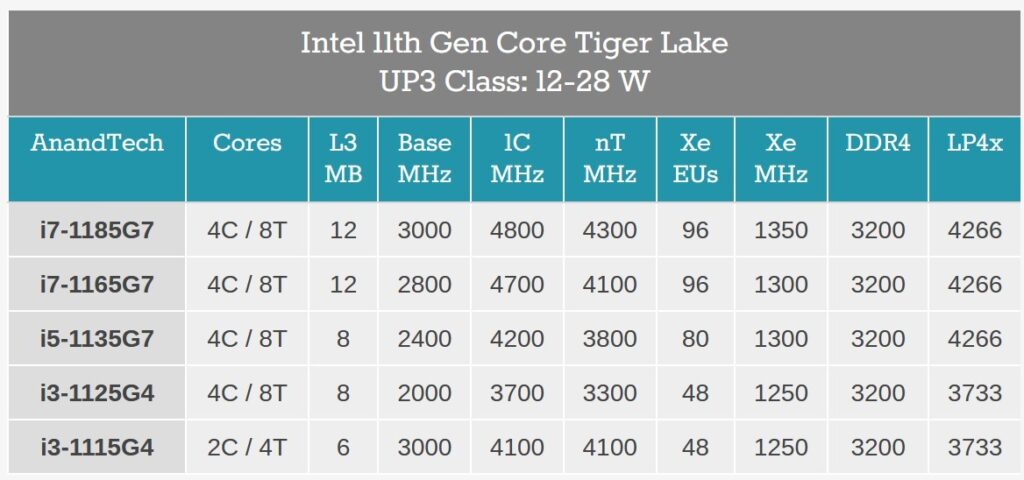
These are the most powerful processors for netbooks in this family at the moment, and the Core i7-1185G7 stands out especially, with 4 cores at 3 GHz and a maximum turbo frequency of 4.8 GHz, which does, however, trigger the TDP up to 50 W at these peaks. That’s where the chip’s power control comes in, which ensures that the experience is consistent depending on whether we have it plugged in or running on battery power.
All chips feature Intel Xe graphics, but the execution units vary by model. In the best case, we have 96 EUs at 1.35 GHz frequency, and it will be interesting to see how far these models can go in gaming.
Accompanying these more advanced processors we have the four initial low consumption models. They are included in the so-called “UP4 Class” that we used to know as the “Y” series, and they have a TDP that goes from 7 to 15 W. The power is lower, of course, but the consumption is also lower and as in other generations the idea is to apply them to especially light and efficient equipment.
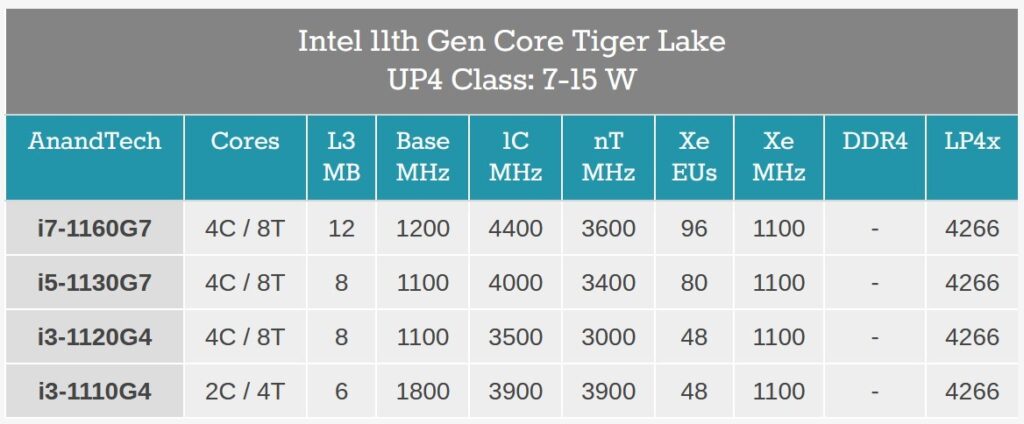
The native frequency is significantly lower to achieve this TDP, but the Turbo frequencies that can be reached are striking: 4.4 GHz (if only one core is needed working at maximum) and 3.6 GHz (in all cores). In the Core i7-1160G7, we have an Iris Xe with 96 EUs running at 1.1 GHz, so in this case, the graphics performance could also give pleasant surprises.
The CPU improves, but it is almost the least important
At Intel -which, by the way, is inaugurating its logo- they spoke during the presentation of how they have refined their 10-nanometer lithography and applied Intel SuperFin technology to improve the performance and efficiency of these transistors that are the basis of their new SoCs.
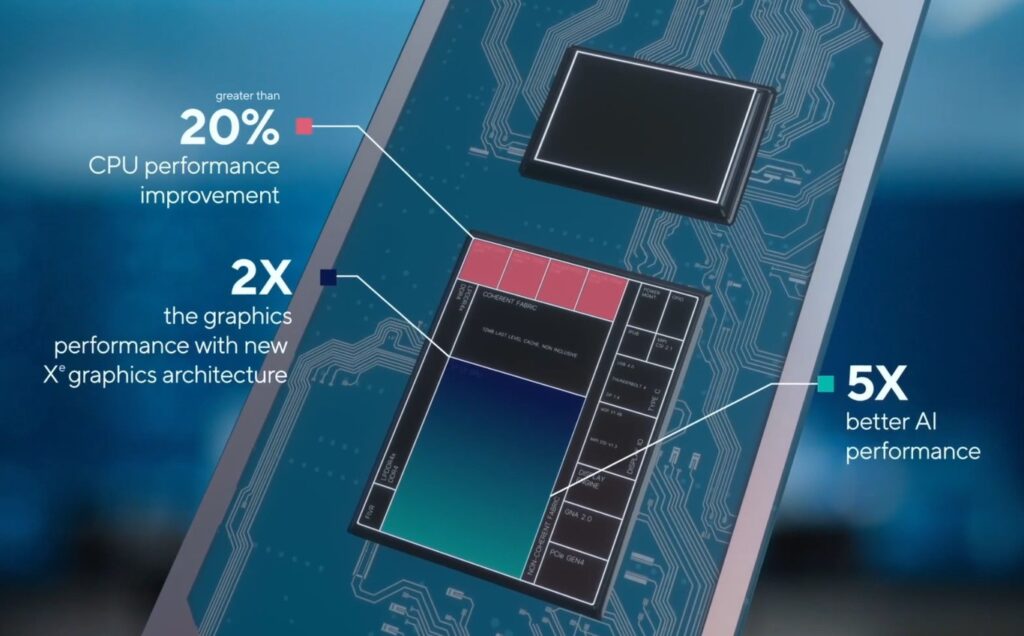
The redesign also allows them to operate at lower voltages and to integrate a good set of new functions, integrating features that we will talk more about in-depth such as Thunderbolt 4, Wi-Fi 6 or PCIe 4.0 support, as well as performance improvements that according to Intel are 20% better in the CPU but are 2 times (100%) those of the previous graphic cores.
The performance in the field of artificial intelligence is multiplied by five, and it is applied in several areas that among other things allow taking advantage of each nucleus in an optical way at every moment.
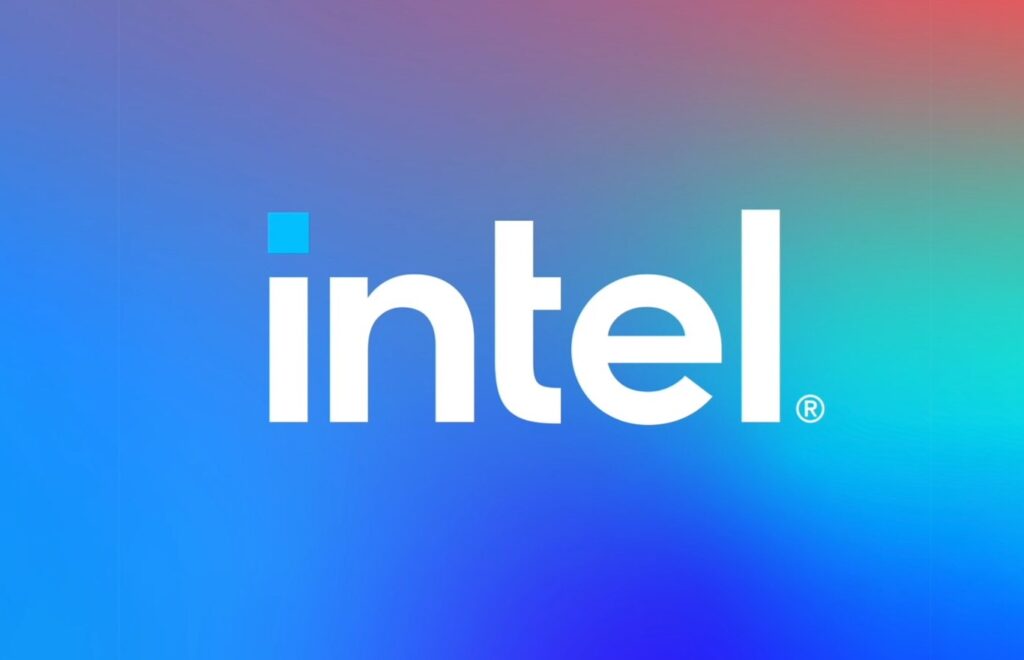
This is precisely one of the surprises of this launch: the performance of the CPU improves, without a doubt, but it is overshadowed by the rest of the improvements that Intel brings to this platform.
The great highlight is its new graphics architecture, which is accompanied by the new performance multiplied by artificial intelligence tasks and that set of connectivity and portability options that come together under the so-called Project Athena.
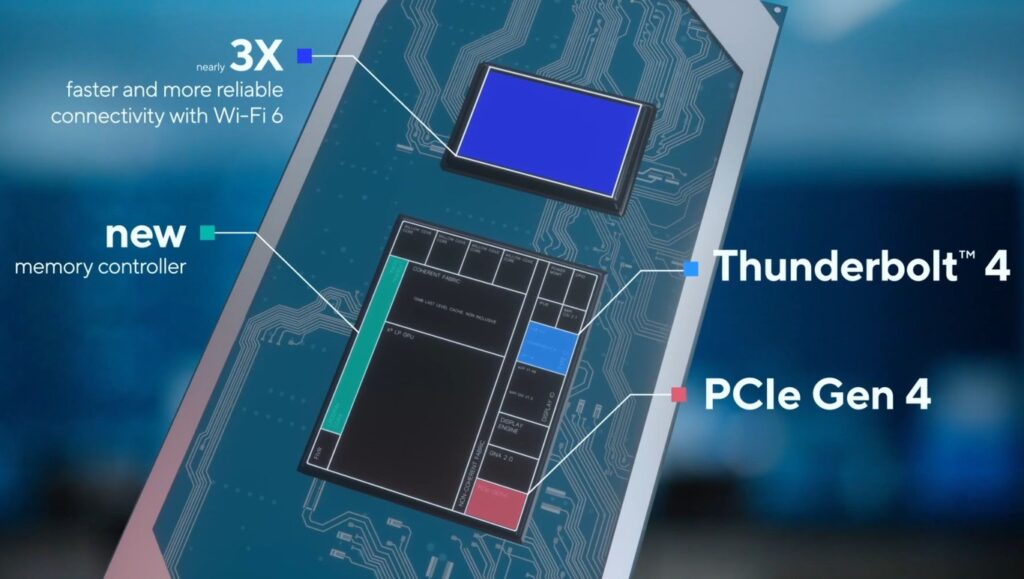
Precisely the Project Athena, now renamed “Intel EVO”, defines a series of components and technologies that are combined in these new computers in which Intel wants to guarantee certain key sections for the usability of these computers. For example, the capacity to wake up in one second from the states of suspension.
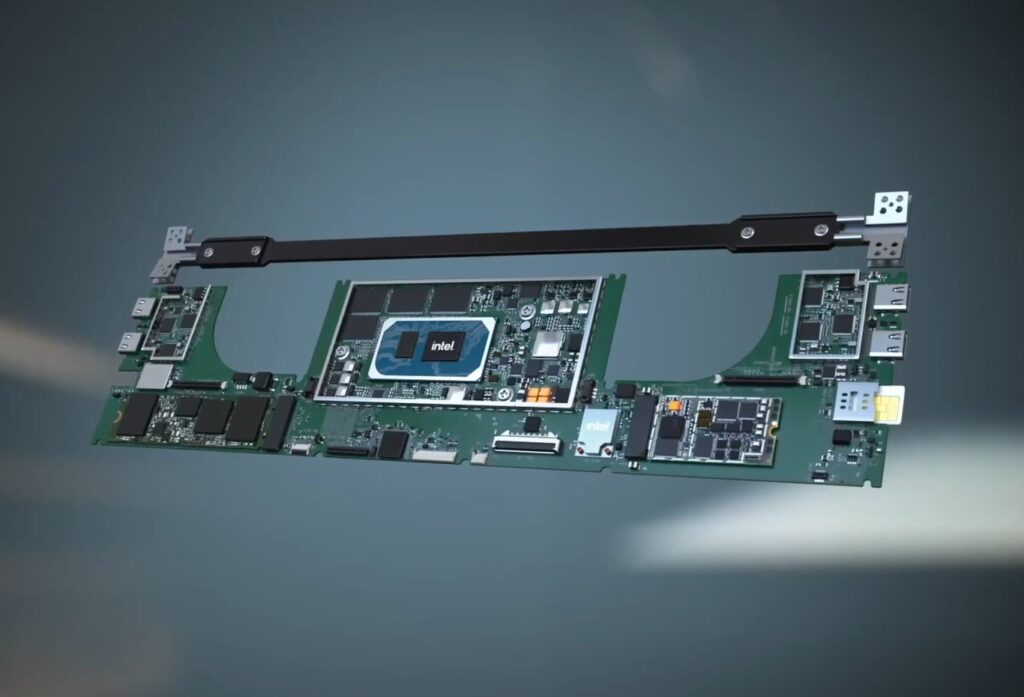
It will also be possible to enjoy (at least) 9 hours of autonomy in computers with Full HD screens and more or less normal use of the laptop, and with these computers offers support for a fast charge that for example allows obtaining other 4 hours of autonomy (again in computers with Full HD screens) in only 30 minutes of charge.
The era of Intel Iris Xe graphics begins
We have been waiting a long time for a qualitative leap from Intel in the graphics field, and although some “huge” products for data centers and high-performance computing environments have already been glimpsed, the model for end-users had not crystallized yet.
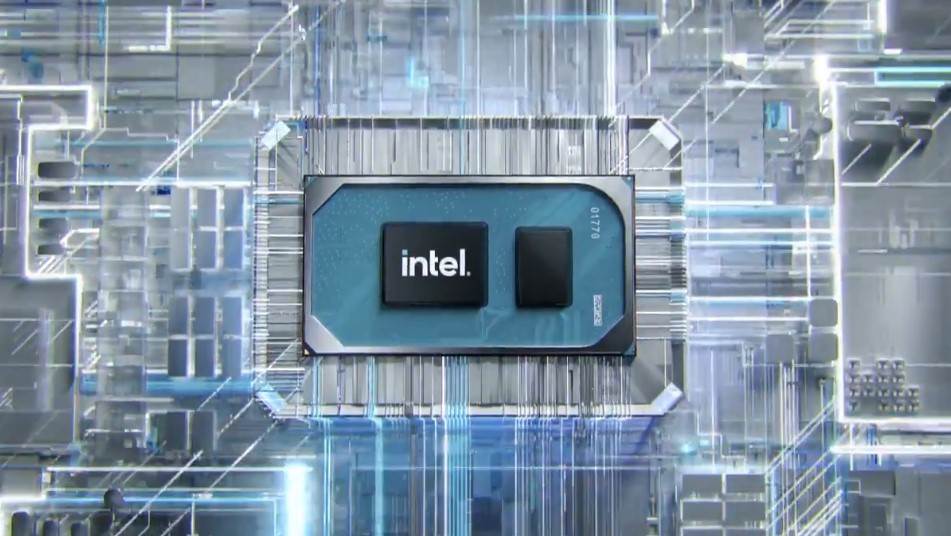
It does now for the first time in the form of integrated graphics chips for laptops. The traditional Intel HD Graphics and Intel Iris, solutions based on Intel’s Gen11 Graphics architecture of the Ice Lake family, are now replaced by Intel Iris Xe, the implementation for this type of equipment of the new graphics architecture of this company.
There are many promises of these chips and this architecture, and months ago we could see how a prototype of a laptop with these chips was able to run ‘Battlefield V’ in 1080p and high detail with surprising smoothness.
It is still too early to confirm if we are facing the chips that will turn any laptop into a modest gaming machine without the need for dedicated graphics, but of course, Intel seems to propose a very far-reaching solution that will give much more room for maneuver, even for more occasional players or those who are not so demanding in this area.
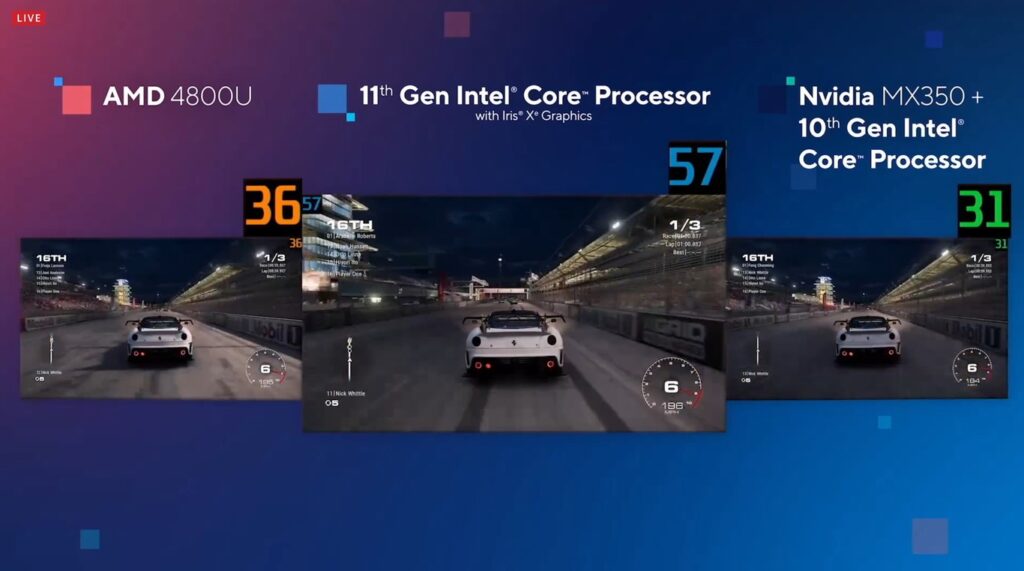
The tests that Intel showed during the presentation were very striking, of course. To begin with, they indicated that with Intel Iris Xe they achieved better graphics performance than 90% of laptops with dedicated graphics (not integrated) that were sold last year.
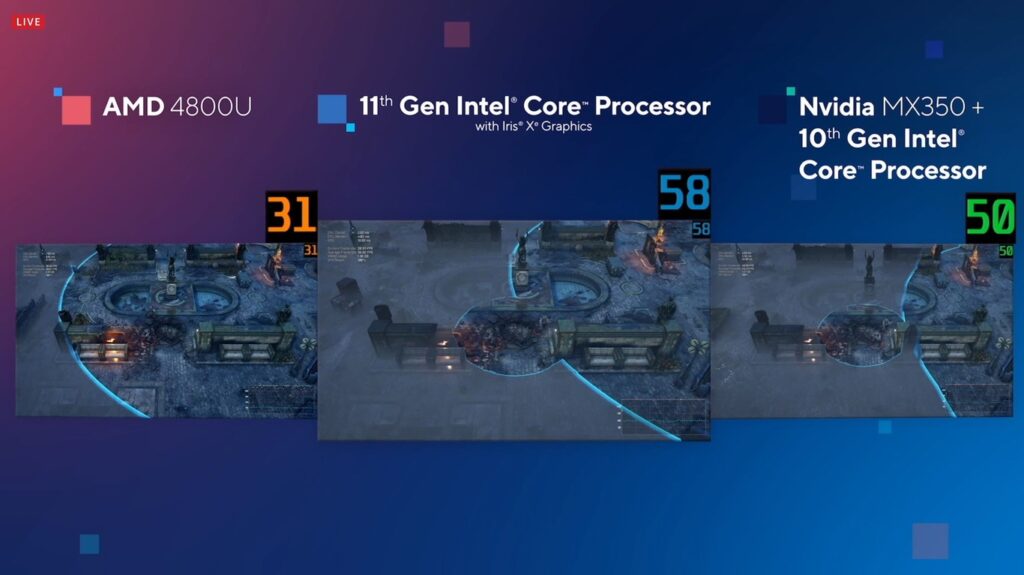
In their comparisons with various games, they showed a computer with an AMD Ryzen 7 4800U against one of their 11th generation processors (not specified), and at least in those internal tests, it was clear that the performance of these new Intel microphones and their Iris Xe graphics chips was notably superior to the integrated graphics chips of those Intel chips.
Although these tests are certainly surprising, it will be especially interesting to see if the expectations generated by the company today become a reality when we have access to computers with which to analyze that performance independently.
Wi-Fi 6 and Thunderbolt 4 in the chambers
Intel has always tried to offer complete solutions for OEMs and notebook manufacturers by launching new generations of CPUs for this segment. They invented the category of Ultrabooks that ended up fading away, and now they will promote the so-called Project Athena that groups computers with certain types of processors and certain connectivity or battery life options, for example.
Something similar is happening with the new generation of processors with Tiger Lake microarchitecture: Intel combines them with two striking and important features that will allow them to win points in the aforementioned areas. To begin with, there is Wi-Fi 6 (802.11ax), the new generation of wireless network connectivity that is gradually being extended and that in time will almost completely replace Wi-Fi 5 connections, much better known as 802.11ac until now.
Having this Wi-Fi 6 connectivity as standard is interesting because it enables transfer rates of 600 Mbps per stream (433 in Wi-Fi 5) and a maximum total of 10,000 Mbps (7,000 in Wi-Fi 5). The range and coverage improve even in saturated spaces, which makes this standard especially interesting with the growing number of devices that connect to these networks.
The other new feature of the pack is the Thunderbolt 4 connectivity, which despite the increase in numbering does not bring about particularly revolutionary changes. Transfer speeds are maintained for Thunderbolt 3, so we will have a maximum of 40 Gbps. That will make it even higher than the USB 3.2 Gen 2 standard that achieves transfers of up to 20 Gbps.
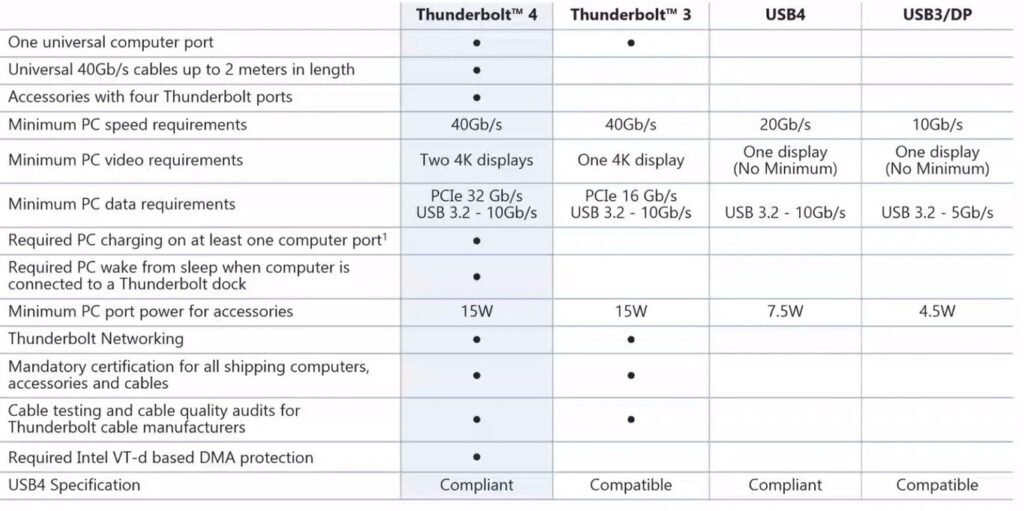
There are still internal changes that could make these devices work a little better. Intel requires Thunderbolt 4 to support 32 Gbps bandwidths, which is twice as much as TB3 support.
This will mean that in many scenarios, even if the maximum speed is not higher, transfers can benefit from this bandwidth. It will allow for example to connect not one 4K monitor, as in Thunderbolt 3, but two of these 4K screens and even an 8K screen.
The standard also makes it possible to release docks (base stations) with up to four ports and will correct a TB3 defect that did not allow “waking up” a PC from a keyboard or mouse connected to one of these docks.
This post may contain affiliate links, which means that I may receive a commission if you make a purchase using these links. As an Amazon Associate, I earn from qualifying purchases.

